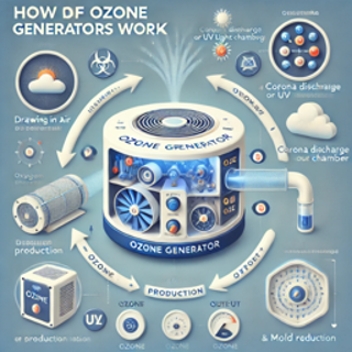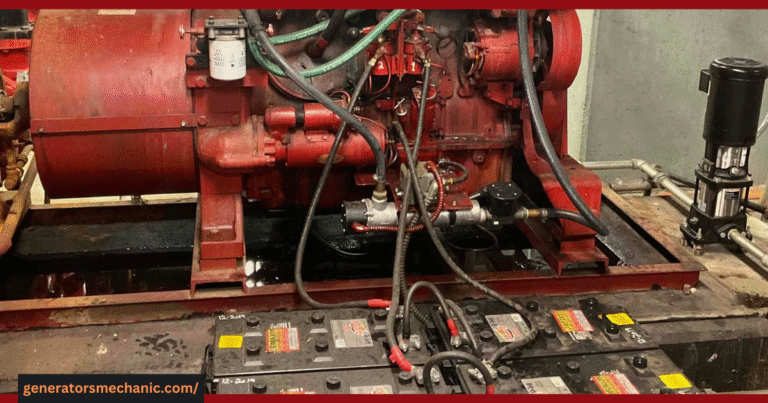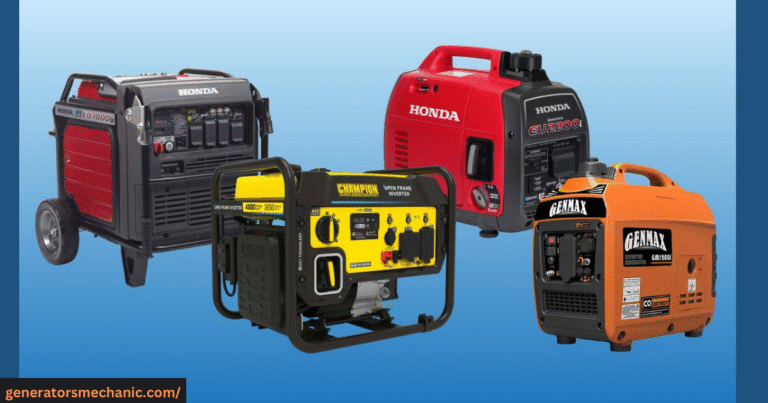How Does a Generator Transfer Switch Work? 7 Powerful Insights for Safe & Reliable Power
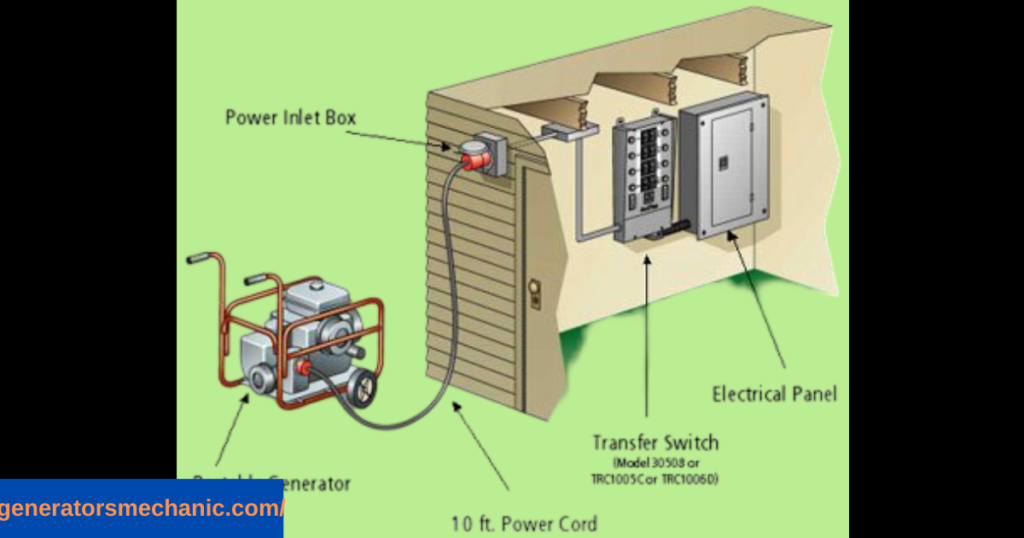
A transfer switch is one of the most important components for every home that wants to use emergency power and main power with the highest safety level.
Transfer switches are designed to avoid electrical hazards by switching to only one current at a time, thus achieving a 0% chance of crossover and backfeed.
Moreover, using a transfer switch is very simple and even ATS (Automatic Transfer Switch) does the job without any interaction.
It is a one-time investment and you only need to install one near the control cabinet to avoid problems like power overlap, cable tangling, etc.
In this guide, we will discuss what a transfer switch is. How does it work? How to use it efficiently and why do we need to install it?
What is a transfer switch?
A transfer switch is an essential device that safely connects a backup generator to your home’s electrical system. It ensures that when the power goes out, your generator can supply electricity without the risk of backfeeding into the grid, which can be dangerous. In simple terms, it acts like a bridge that directs power to where it’s needed while keeping everything safe and organized.
When exploring options, many homeowners choose an Automatic Transfer Switch for generator setups because they eliminate the hassle of manually switching power during an outage. With an automatic system, the switch detects the power loss instantly and transfers the load to your generator within seconds. This not only offers convenience but also ensures uninterrupted power for your home appliances.
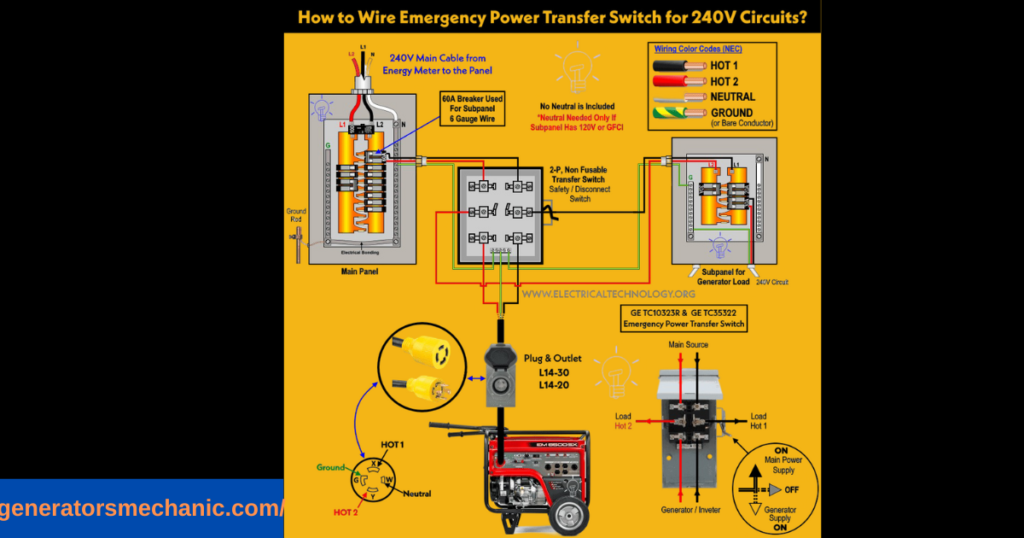
A transfer switch is an electrical device that isolates the main power source (from the grid) and the generator power source.
Transfer switches are designed to avoid potential accidents by switching the electrical energy to one power source at a time.
If the generator and the grid collapse, imagine what will happen: all your appliances will burn out and your whole house or generator may also burn out.
Switch types
Automatic transfer switch (ATS):
ATS (Automatic Transfer Switch) is a transfer switch that automatically switches the power source. Once the primary source fails, the switch switches to the backup source.
Manual Transfer Switch (MTS):
As the name implies, a manual transfer switch requires manual operation to switch the power source. You can flip individual circuit breakers, levers, or buttons to switch the power source.
How does a generator transfer switch work?
A transfer switch is mainly used to isolate the utility power and the backup power source to avoid backfeed. You have some circuit breakers to manually switch the power source, or if there is an ATS, you don’t need to see the ATS.
Just start the generator and enjoy clean power.
Pro Tip: A transfer switch has multiple circuit breakers. You can assign a specific load to each circuit breaker, allowing you to load the generator more precisely without causing overload/voltage issues.
Here is how ATS and MTS switches work.
How does an automatic transfer switch work?
An ATS is a centralized, logic-based, self-acting, intelligent device that automatically switches power between the main (grid) power grid or the backup power grid.
The purpose of building such a self-acting system is to provide continuous power when the main grid or public grid power supply is interrupted.
The ATS has an automatic controller/central logic system that uses microprocessor-based technology to continuously monitor voltage, current, etc. If the ATS detects an error, it switches to the backup power source.
ATS is used in departments such as hospitals, data centers, etc. that require continuous power.
Note: The ATS switches to AC power after AC power is restored.
How does a manual switch work?
A manual switch plays a vital role in safely connecting your generator to your home’s electrical system. When the power goes out, the switch allows you to manually shift the electricity supply from the utility grid to your generator, ensuring your essential appliances keep running without any backfeeding risks.
Using a transfer switch for generator to house makes the process even smoother, as it creates a direct and secure link between your generator and your home’s circuits. This not only keeps your family safe but also ensures that your generator is powering exactly what you need during an outage.

Like the ATS transfer switch, the manual transfer switch allows you to switch power without affecting the grid and backup power. However, it requires human attention.
One has to flip a circuit breaker, lever, or button to switch power from one source to another.
Most portable generator users (myself included) use manual transfer switches because they are not always connected to the electrical system like a backup unit.
Note: For backup generator owners, we strongly recommend choosing an ATS instead of an MTS (manual transfer switch) because no one wants to restore power in the snow, rain, or wind.
How to use a generator transfer switch?
Learning how to use a generator transfer switch is essential for anyone who relies on backup power during outages. A transfer switch acts as a safe bridge between your generator and your home’s electrical system, ensuring electricity flows smoothly without the risk of backfeeding into utility lines. To operate it, you typically start your generator, let it stabilize, and then switch the transfer switch from “line” to “generator” mode. This way, your appliances and circuits receive stable power without compromising safety.
For homeowners curious about setup, understanding how to install a generator transfer switch is equally important. While professionals often handle installation due to wiring complexities, knowing the basics can help you ensure the system is properly grounded, compliant with local codes, and ready to deliver reliable power when needed.
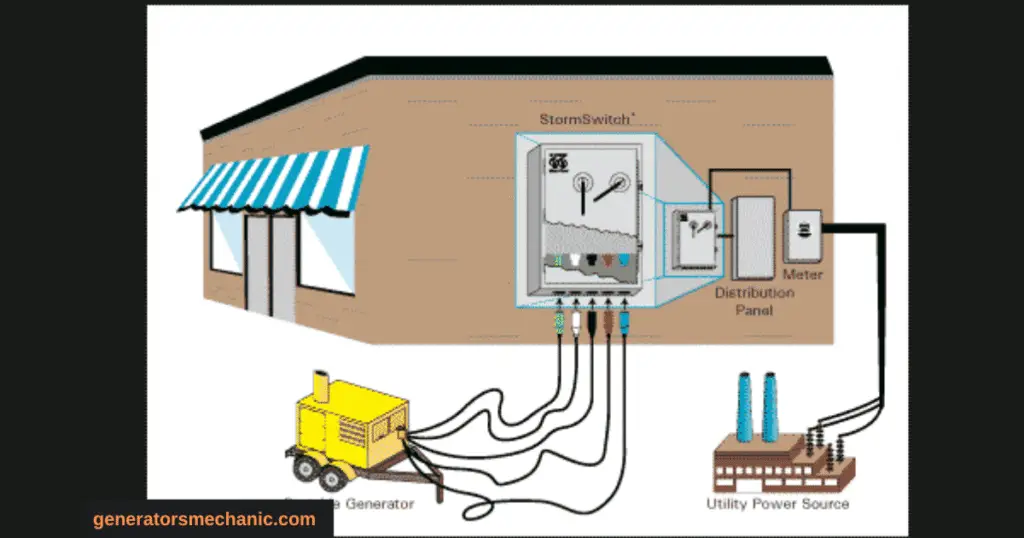
Turn the circuit breaker or transfer the switch lever to the “OFF” position (this step is not required on an ATS).
Find the transfer switch input box and connect the generator power cord. Start the generator and allow it to warm up.
Open the transfer switch breakers one at a time (this step is not required even with an ATS). Opening all breakers may overload the generator.
Once power is restored, always unplug the cables from the junction box and switch the power breaker to the main power source. (Again, this step is not required with an ATS.)
Why do you need a generator transfer switch?
Having a generator at home or on a jobsite is extremely useful, but without a transfer switch, using it safely and efficiently becomes a challenge. A transfer switch ensures that your generator connects seamlessly to your home’s electrical system, preventing backfeeding that could damage appliances or endanger utility workers. It also gives you the convenience of powering essential circuits directly without running multiple extension cords.
For those who value convenience and reliability, an Automatic Transfer Switch for a generator is an even better choice. It detects a power outage instantly and shifts the load to your generator without you lifting a finger. This not only saves time but also ensures uninterrupted power for critical systems like refrigerators, medical equipment, or heating and cooling units. In short, a transfer switch is not just a safety measure—it’s a smart upgrade for anyone who wants peace of mind during blackouts.
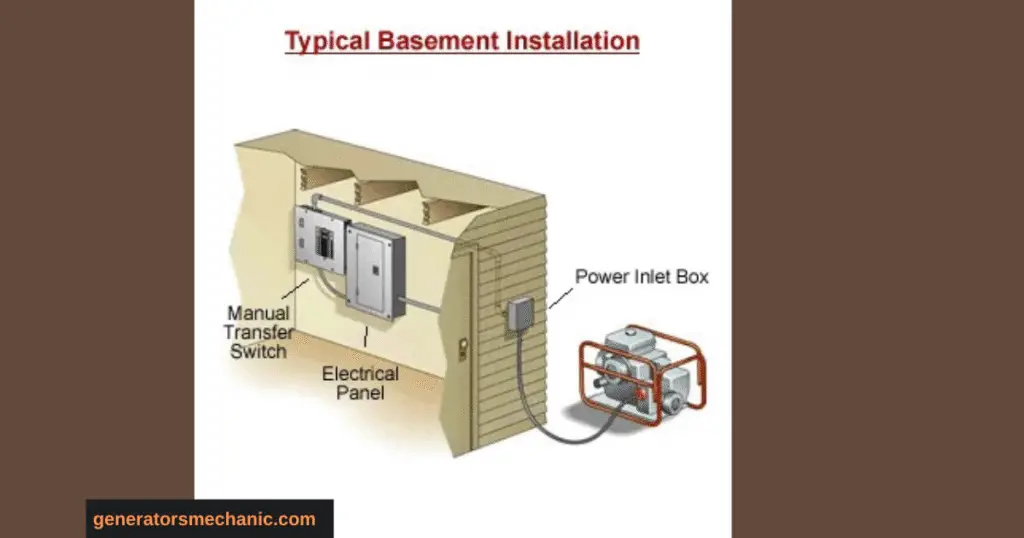
Not only do transfer switches help prevent overlap between main and emergency power, but they are also required in some areas.
Transfer switches allow us to switch power sources in seconds, and even an ATS (Automatic Transfer Switch) does this job without any interaction.
For non-technical people, running a generator/backup power source without installing a transfer switch is a big risk.
If the generator output overlaps with the grid output (feeds back to the grid), your house will be supplied with two different currents, which may burn your house.
A stupid friend of mine burned all his wires and some expensive appliances, luckily he and his family are safe.
Note: If you are unsure if your area or building requires a transfer switch, contact the building inspection agency who will advise you.
How much does a switch cost?
When people ask, How much does a generator transfer switch cost, the answer can vary depending on the type and size of the switch you choose. On average, costs range anywhere between a few hundred dollars to over a thousand, based on the brand, features, and installation requirements.
For homeowners looking for convenience and safety, an Automatic Transfer Switch is a popular option. It seamlessly shifts power from the utility to your generator during an outage, ensuring your home stays powered without manual intervention. While it may cost more upfront, its reliability and ease of use make it a worthwhile investment for long-term peace of mind.

The average cost of a transfer switch installation ranges from $150 to over $2000, depending on the size, type, and quality of the transfer switch.
Can I run a generator without a transfer switch? – Alternatives
Many homeowners wonder if it’s possible to power their house by running a generator without a transfer switch. While technically you can connect a generator directly using extension cords or interlock systems, it’s not the safest or most reliable option. A transfer switch ensures that electricity flows smoothly and securely, preventing backfeeding and protecting both your appliances and utility workers.
If you’re considering alternatives, it’s essential to first understand the types of generator transfer switches available. Manual transfer switches are budget-friendly and allow you to control the power flow manually, while automatic transfer switches detect outages and switch power instantly, offering greater convenience. Although alternatives exist, using the right transfer switch is always the safest way to keep your generator connected.
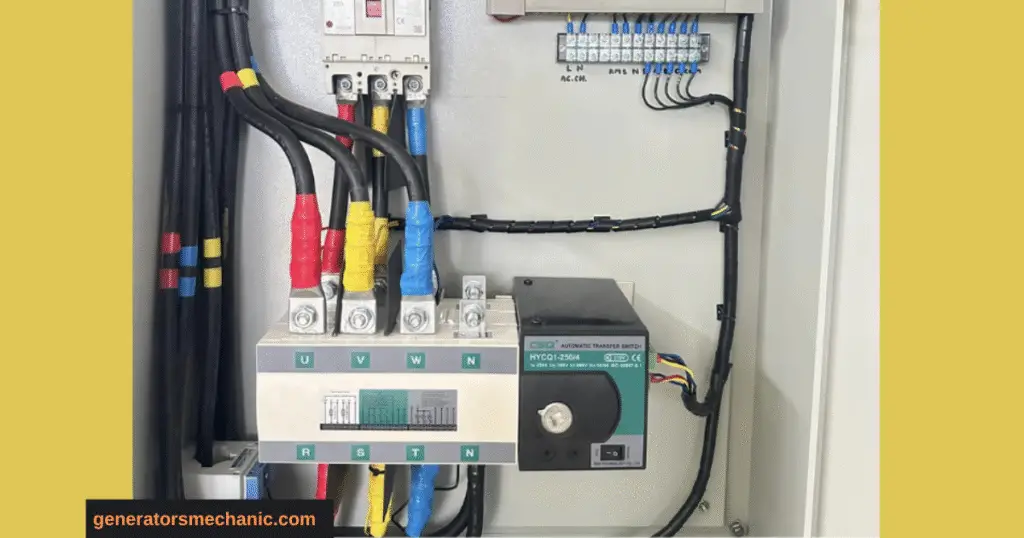
Yes, there are several other options, such as running the generator with a fuse box, interlock kit, inverter, relay, or even the main circuit breaker. Nonetheless, we strongly recommend using a switcher as it is the safest method.
We also have instructions on how to connect a generator to a house without a transfer switch. Be sure to check that out.
Where is the generator transfer switch?
When you’re setting up a backup power system, one of the most common questions is: Where is the generator transfer switch located? Typically, the transfer switch is installed near your home’s main electrical panel for easy access and direct control of power distribution. This essential device ensures a safe transition of power from your generator to your home’s electrical circuits.
In most residential setups, you’ll find either an automatic or a generator manual transfer switch, which gives you control to safely switch between utility and generator power. By locating and understanding your transfer switch, you can confidently manage power during an outage without risking electrical hazards.

The best place to install a transfer switch is close to your home’s electrical panel. This eliminates the clutter of extension cords and ensures adequate safety, as most electrical panels are located in the basement.
Advantages of a transfer switch
Installing a transfer switch comes with several benefits that make using a generator safer and more convenient. First, it allows you to connect your generator directly to your home’s electrical panel, ensuring that power is distributed evenly without relying on extension cords. This not only improves safety but also provides a seamless flow of electricity to essential appliances during an outage.
Another key advantage is efficiency—by using a transfer switch, you can choose which circuits to power, helping you manage your generator’s load effectively. It also prevents backfeeding, which can be dangerous for both you and utility workers. For homeowners curious about how this system looks in practice, exploring how a generator transfer switch works can provide a clear picture of the setup and reinforce why a transfer switch is such an important investment.
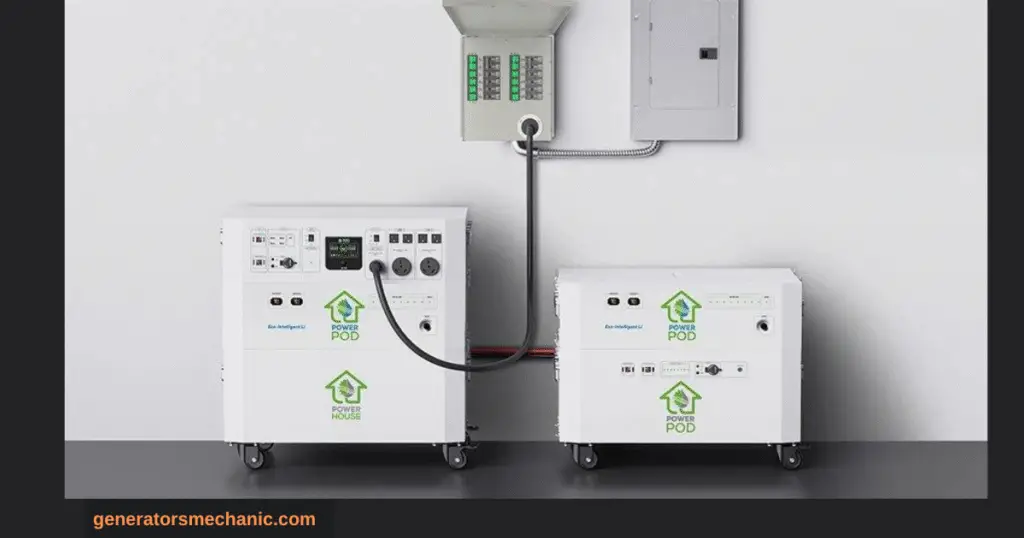
· Reduces the risk of overlapping or feeding back into the network.
· The hassle-free operation, no tangling of cables.
· You don’t need to connect to the generator every time. If you have an MTS, point the circuit breaker toward the generator connection, otherwise, the ATS will do the job for you.
· Extremely safe location and mechanism Since the transfer switch for the generator is installed next to the distribution board, there is no risk of frequent interaction.
· ATS provides tremendous automation; during a long power outage, you don’t even need to look at the ATS.
Verdict
Transfer plays a major role in reducing power accidents since the interaction is very simple and safe. You just switch the power source as required and even the ATS will do the job without any interaction.
Despite the alternatives like interlock kits, breaker boxes, etc., transfer switches still prove to be safer and more user-friendly.
FAQ – Frequently Asked Questions
Is it necessary to turn off the main circuit breaker when using a transfer switch?
Yes, the main switch should be moved to the standby or generator side.
Is a permit required for installing a generator transfer switch?
Yes, an electrical permit should be obtained from a licensed electrician. Also, the work must be inspected by a qualified electrical inspector before switching to the generator or standby power.
Is there an alternative to a generator transfer switch?
Lockout kits are the cheapest alternative to transfer switches. However, you can opt for slightly more expensive and safer alternatives, such as breaker boxes, inverters, relays, or even main switches.


